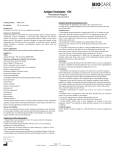Download Data Sheet
Transcript
Helicobacter pylori Concentrated and Prediluted Monoclonal Antibody Control Number: 901-383-032415 Catalog Number: CM 383 A, C PM 383 AA, H, L IP 383 G10 OAI 383 T60 Description: 0.1, 1.0 ml, concentrated 6.0, 25, 100 ml, prediluted 10 ml, prediluted 60 tests, prediluted Dilution: 1:100 - 1:200 Ready-to-use Ready-to-use Ready-to-use Diluent: Renoir Red N/A N/A N/A ISO 9001&13485 CERTIFIED Intended Use: For In Vitro Diagnostic Use Helicobacter pylori [BC7] is a mouse monoclonal antibody that is intended for laboratory use in the qualitative identification of helicobacter pylori protein by immunohistochemistry (IHC) in formalin-fixed paraffin-embedded (FFPE) human tissues. The clinical interpretation of any staining or its absence should be complemented by morphological studies using proper controls and should be evaluated within the context of the patient's clinical history and other diagnostic tests by a qualified pathologist. Protocol Recommendations (intelliPATH and manual use) Cont'd: Probe: Incubate for 10 minutes at RT with a secondary probe. Polymer: Incubate for 10-20 minutes at RT with a tertiary polymer. Chromogen: Incubate for 5 minutes at RT with Biocare's DAB - OR - Incubate for 5-7 minutes at RT with Biocare's Warp Red. Counterstain: Counterstain with hematoxylin. Rinse with deionized water. Apply Tacha's Bluing Solution for 1 minute. Rinse with deionized water. Summary and Explanation: Helicobacter pylori are spiral-curved, gram-negative bacteria that can infect the surface epithelium of the mucous layer of the stomach. There is evidence showing that these bacteria may play a significant role in peptic ulcer disease. Immunohistochemical techniques can distinguish Helicobacter pylori from other types of bacterial infections. This small spiral-curved shaped bacterium can be clearly seen using a 100X oil objective. intelliPATH™ Automated Slide Stainer: IP383 is intended for use on the intelliPATH™ Automated Slide Stainer. Refer to the intelliPATH Automated Slide Stainer manual for specific instructions on its use. When using the intelliPATH, peroxide block with intelliPATH Peroxidase Blocking Reagent (IPB5000) may be performed following heat retrieval. Principle of Procedure: Antigen detection in tissues and cells is a multi-step immunohistochemical process. The initial step binds the primary antibody to its specific epitope. A secondary antibody may be applied to bind the primary antibody, followed by an enzyme labeled polymer; or an enzyme labeled polymer may be applied directly to bind the primary antibody. The detection of the bound primary antibody is evidenced by an enzyme-mediated colorimetric reaction. Source: Mouse monoclonal Species Reactivity: Human, others not tested Clone: BC7 Isotype: IgG1 Total Protein Concentration: ~10 mg/ml. Call for lot specific Ig concentration. Epitope/Antigen: Helicobacter pylori Cellular Localization: Spiral shaped bacterium Positive Control: Stomach infected with H. pylori Known Applications: Immunohistochemistry (formalin-fixed paraffin-embedded tissues) Supplied As: Buffer with protein carrier and preservative Storage and Stability: Store at 2ºC to 8ºC. Do not use after expiration date printed on vial. If reagents are stored under conditions other than those specified in the package insert, they must be verified by the user. Diluted reagents should be used promptly; any remaining reagent should be stored at 2ºC to 8ºC. Protocol Recommendations (intelliPATH and manual use): Peroxide Block: Block for 5 minutes with Biocare's Peroxidazed 1. Pretreatment Solution (recommended): Borg or Reveal Pretreatment Protocol: Heat Retrieval Method: Retrieve sections under pressure using Biocare's Decloaking Chamber, followed by a wash in distilled water; alternatively, steam tissue sections for 45-60 minutes. Allow solution to cool for 10 minutes then wash in distilled water. Protein Block (Optional): Incubate for 5-10 minutes at RT with Biocare's Background Punisher. Primary Antibody: Incubate for 30 minutes at RT. Protocol Recommendations (ONCORE Automated Slide Staining System): OAI383 is intended for use with the ONCORE Automated Slide Staining System. Refer to the ONCORE Automated Slide Staining System User Manual for specific instructions on its use. Protocol parameters in the ONCORE Automated Slide Stainer Protocol Editor should be programmed as follows: Protocol Name: H. pylori - OR - H. pylori AP Protocol Template (Description): Ms HRP Template 1 - OR - Ms AP Template 1 Dewaxing (DS Option): DS2 Antigen Retrieval (AR Option): AR2, low pH; 101°C Reagent Name, Time, Temp.: H. pylori, 30 min., 37°C Technical Note: This antibody has been optimized for use with Biocare's MACH 4 Universal HRPPolymer Detection, intelliPATH Universal HRP Detection Kit and ONCORE HRP and AP Detections. Other Biocare polymer detection kits may be used; however, users must validate incubation times and protocols for their specific application. Use TBS for washing steps. Limitations: The optimum antibody dilution and protocols for a specific application can vary. These include, but are not limited to: fixation, heat-retrieval method, incubation times, tissue section thickness and detection kit used. Due to the superior sensitivity of these unique reagents, the recommended incubation times and titers listed are not applicable to other detection systems, as results may vary. The data sheet recommendations and protocols are based on exclusive use of Biocare products. Ultimately, it is the responsibility of the investigator to determine optimal conditions. The clinical interpretation of any positive or negative staining should be evaluated within the context of clinical presentation, morphology and other histopathological criteria by a qualified pathologist. The clinical interpretation of any positive or negative staining should be complemented by morphological studies using proper positive and negative internal and external controls as well as other diagnostic tests. Quality Control: Refer to CLSI Quality Standards for Design and Implementation of Immunohistochemistry Assays; Approved Guideline-Second edition (I/LA28-A2). CLSI Wayne, PA, USA (www.clsi.org). 2011 Page 1 of 2 Helicobacter pylori Concentrated and Prediluted Monoclonal Antibody Control Number: 901-383-032415 Precautions: 1. This antibody contains less than 0.1% sodium azide. Concentrations less than 0.1% are not reportable hazardous materials according to U.S. 29 CFR 1910.1200, OSHA Hazard communication and EC Directive 91/155/EC. Sodium azide (NaN3) used as a preservative is toxic if ingested. Sodium azide may react with lead and copper plumbing to form highly explosive metal azides. Upon disposal, flush with large volumes of water to prevent azide build-up in plumbing. (Center for Disease Control, 1976, National Institute of Occupational Safety and Health, 1976) (2) 2. Specimens, before and after fixation, and all materials exposed to them should be handled as if capable of transmitting infection and disposed of with proper precautions. Never pipette reagents by mouth and avoid contacting the skin and mucous membranes with reagents and specimens. If reagents or specimens come in contact with sensitive areas, wash with copious amounts of water. (3) 3. Microbial contamination of reagents may result in an increase in nonspecific staining. 4. Incubation times or temperatures other than those specified may give erroneous results. The user must validate any such change. 5. Do not use reagent after the expiration date printed on the vial. 6. The SDS is available upon request and is located at http://biocare.net/. ISO 9001&13485 CERTIFIED Troubleshooting: Follow the antibody specific protocol recommendations according to data sheet provided. If atypical results occur, contact Biocare's Technical Support at 1-800-542-2002. References: 1. Enomoto H, et al. Topographic distribution of Helicobacter pylori in the resected stomach. Eur J Gastroenterol Hepatol. 1998 Jun;10(6):473-8. 2. Center for Disease Control Manual. Guide: Safety Management, NO. CDC-22, Atlanta, GA. April 30, 1976 "Decontamination of Laboratory Sink Drains to Remove Azide Salts." 3. Clinical and Laboratory Standards Institute (CLSI). Protection of Laboratory Workers from Occupationally Acquired Infections; Approved Guideline-Fourth Edition CLSI document M29-A4 Wayne, PA 2014. Page 2 of 2


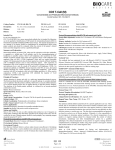
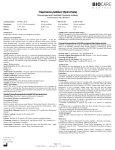
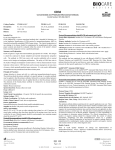
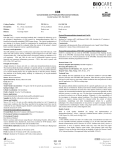
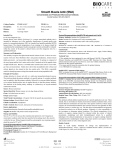
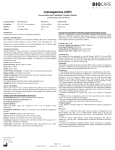
![Progesterone Receptor (PR) [16]](http://vs1.manualzilla.com/store/data/005703733_1-5d4a6a4c070c4aacc906912b3410a27a-150x150.png)
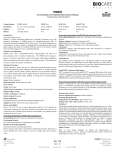
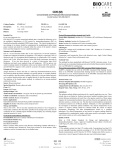

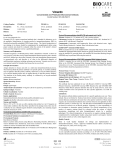
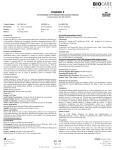
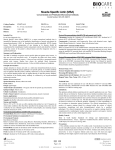
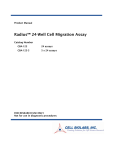
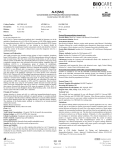
![Estrogen Receptor (ER) [SP1]](http://vs1.manualzilla.com/store/data/005885543_1-e9d75303a2a759dcb2dd4dad516aa5ce-150x150.png)
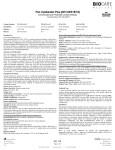
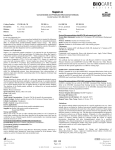
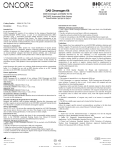
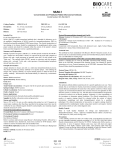
![TTF-1 [SPT24] - Zytomed Systems](http://vs1.manualzilla.com/store/data/005793963_1-173a06c06d5648223f763723a0e98383-150x150.png)
